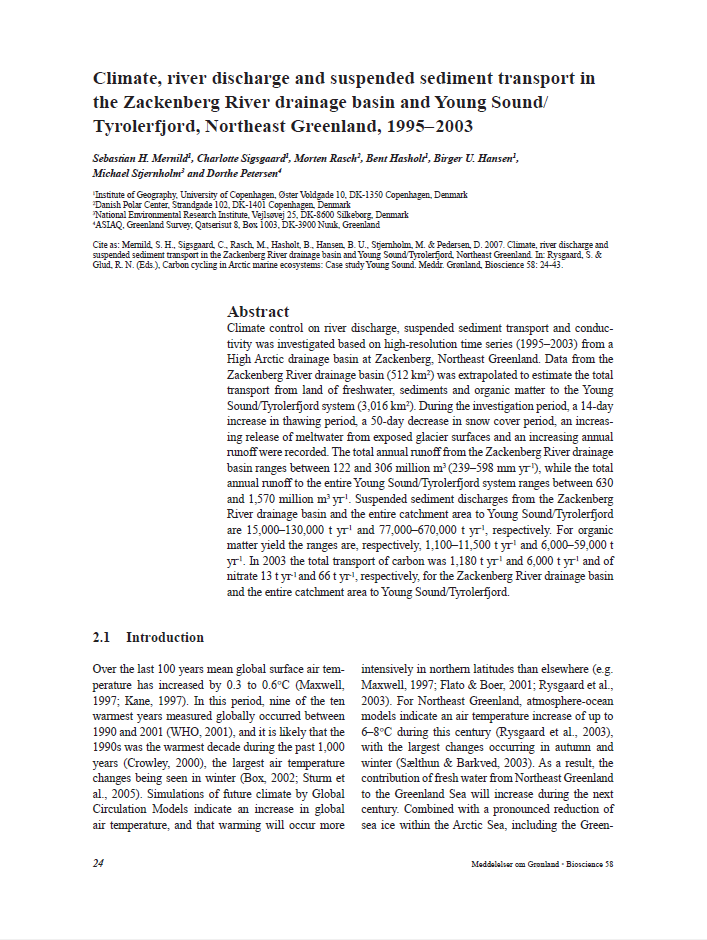Climate, river discharge and suspended sediment transport in the Zackenberg River drainage basin and Young Sound/Tyrolerfjord, Northeast Greenland, 1995−2003
DOI:
https://doi.org/10.7146/mogbiosci.v58.142638Abstract
Climate control on river discharge, suspended sediment transport and conductivity was investigated based on high-resolution time series (1995–2003) from a High Arctic drainage basin at Zackenberg, Northeast Greenland. Data from the Zackenberg River drainage basin (512 km2) was extrapolated to estimate the total transport from land of freshwater, sediments and organic matter to the Young Sound/Tyrolerfjord system (3,016 km2). During the investigation period, a 14-day increase in thawing period, a 50-day decrease in snow cover period, an increasing release of meltwater from exposed glacier surfaces and an increasing annual runoff were recorded. The total annual runoff from the Zackenberg River drainage basin ranges between 122 and 306 million m3 (239–598 mm yr-1), while the total annual runoff to the entire Young Sound/Tyrolerfjord system ranges between 630 and 1,570 million m3 yr-1. Suspended sediment discharges from the Zackenberg River drainage basin and the entire catchment area to Young Sound/Tyrolerfjord are 15,000–130,000 t yr-1 and 77,000–670,000 t yr-1, respectively. For organic matter yield the ranges are, respectively, 1,100–11,500 t yr-1 and 6,000–59,000 t yr-1. In 2003 the total transport of carbon was 1,180 t yr-1 and 6,000 t yr-1 and of nitrate 13 t yr-1 and 66 t yr-1, respectively, for the Zackenberg River drainage basin and the entire catchment area to Young Sound/Tyrolerfjord.

Downloads
Published
Issue
Section
License
Coypyright by the authors and the Commision for Scientific Research in Greenland / Danish Polar Center/Museum Tusculanum Press as indicated in the individual volumes. No parts of the publications may be reproduced in any form without the written permission by the copyright owners.

